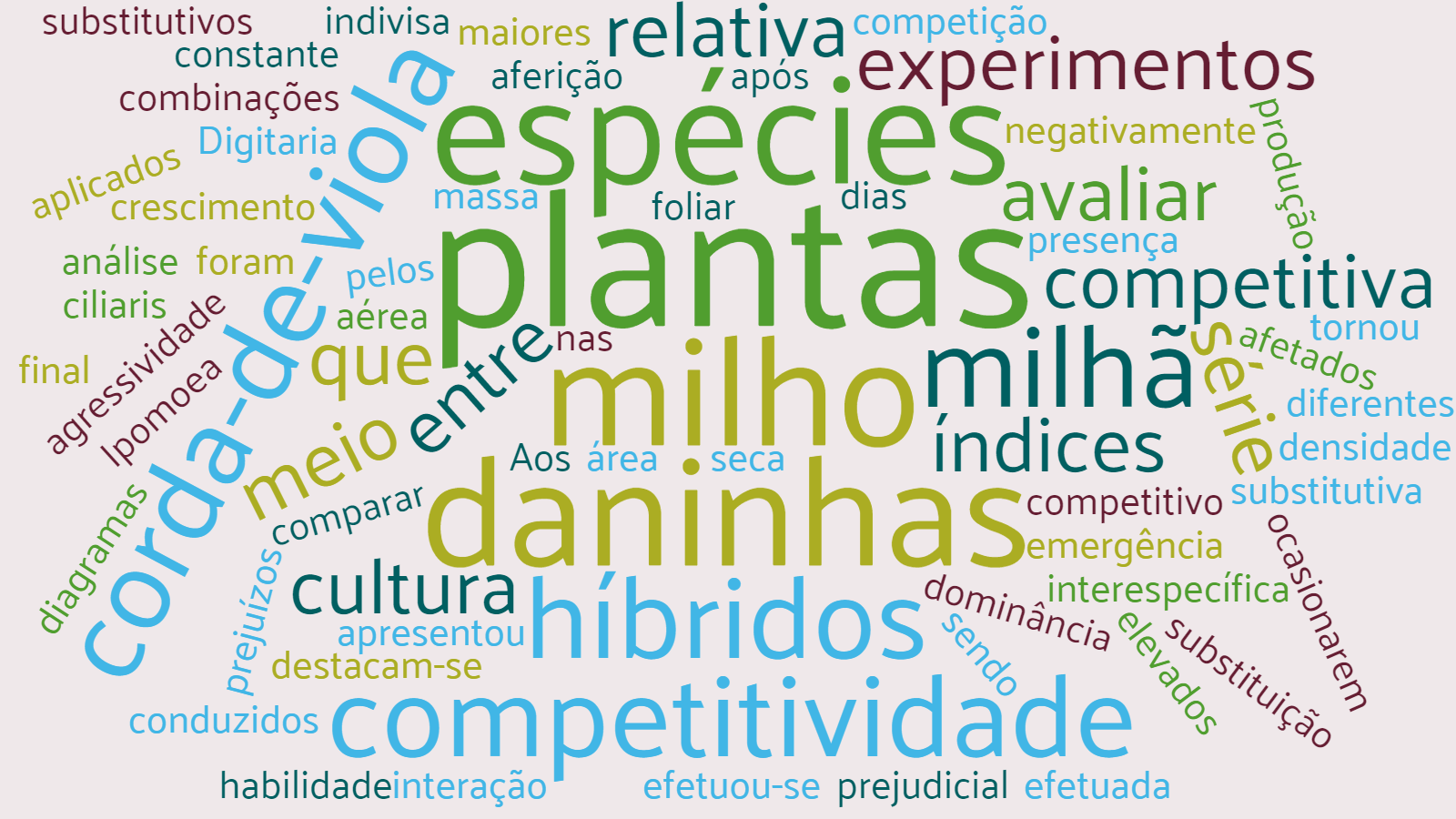Competition between corn hybrids with weeds
DOI:
https://doi.org/10.17648/sas.v2i1.101Keywords:
Digitaria ciliaris, Ipomoea indivisa, Zea maysAbstract
The weeds Digitaria ciliaris (crabgrass) and Ipomoea indivisa (morning glory) stand out for causing many losses in corn. The objective of this work was to evaluate the relative competitive interaction between corn hybrids in the presence of crabgrass and morning glory through replacement series experiments, which were installed in randomized blocks, with four replications. First, for both corn hybrids (Agroeste - AS 1551 PRO 2, Morgan - MG 300 PW, Nidera - NS 92 PRO and Syngenta - Velox TL) and for weeds (crabgrass and morning glory), the density of plants in which the final production became constant was determined (20 plants pot-1 or 463 plants m-2). Subsequently, eight experiments were installed to evaluate the competitive ability of corn hybrids with weeds, both conducted in replacement series, in different combinations of species, varying the relative proportions (100:0, 75:25, 50:50, 25:75 e 0:100%) plants pot-1 (20:0; 15:5; 10:10; 5:15 e 0:20). The analysis of the species competitiveness was carried out by diagrams applied to experiments with replacement series and also by the relative competitiveness indexes. At 50 days after the emergence of the species, leaf area and dry mass of the shoots of the plants were measured. Corn hybrids and weeds were negatively affected, with interspecific competition being the most damaging to species. The crop showed the highest values for competitiveness rates, growth, dominance and aggressiveness. When comparing species to each other, corn was more competitive than weeds.
Downloads

Downloads
Published
How to Cite
Issue
Section
License
Copyright (c) 2020 South American Sciences ⠀⠀⠀⠀⠀⠀⠀⠀⠀ISSN 2675-7222

This work is licensed under a Creative Commons Attribution-NonCommercial-ShareAlike 4.0 International License.
Autores concordam com os seguintes termos:
a) Os autores mantêm os direitos autorais e concedem à revista o direito de primeira publicação, com o trabalho simultaneamente licenciado sob a LicençaAttribution-NonCommercial-ShareAlike 4.0 International, que permite o compartilhamento do trabalho com reconhecimento da autoria e publicação inicial na Revista SAS. A licença permite o uso, a distribuição e a reprodução irrestrita, em qualquer meio, desde que devidamente citada a fonte. Essa licença permite também que outros remixem, adaptem e criem a partir do seu trabalho para fins não comerciais, desde que atribuam a você o devido crédito e que licenciem as novas criações sob termos idênticos.
b) Não cabe aos autores compensação financeira a qualquer título, por artigos ou resenhas publicados na South American Sciences.
c) Os conceitos expressos nos artigos publicados na South American Sciences são de inteira responsabilidade de seus autores.








